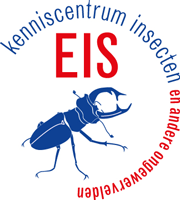| Reële kans op vestiging? |
Ja |
|
| Betrouwbaarheid beoordeling |
Grote mate van zekerheid (meerdere bronnen) |
|
| Vestigingsstatus |
Onbekend |
|
| Zeldzaamheid |
Lokaal |
|
| Invasiviteit |
Niet invasief |
|
| Invasiviteit (toelichting) |
Why B. matsushima is considered an invasive species is not unambiguously clear. Apart from a distributional pattern which is often seen with species distributed through intercontinental shipping, no data could be traced about its invasiveness within in Europe. |
|
| Type introductie |
Onbekend |
|
| Jaar van eerste introductie |
1998 |
|
| Jaar van eerste melding |
1998 |
|
| Natuurlijke verspreiding |
Noord-Amerika |
|
Azië |
|
Europa |
|
| Verspreiding in Nederland |
Zeeland |
|
| Verspreiding in Nederland (toelichting) |
B. matsushima is described from Matsushima Bay (Japan) and occurs also in other parts of Asia, along the West coast of North-America and at a few localities in Europe (Nielsen, 1989). It is also known from New Zealand (Gordon 2009). The first specimens in the Netherlands were collected in the Western Scheldt (Westerschelde) near Vlissingen (locality: Nollepier) at january 31, 1998 and also at the same locality at March 14, 1998 (Faasse, 1998). In June, 16, 2000 the species was found in the Sloe-harbour, also in the Western Scheldt (Faasse 2006). Most specimens were attached to the base of colonies of the Bryozoan Anguinella palmata Van Beneden, 1845, at the underside of boulders near LWST. The species seems to have a local dispersion and occurs in the Netherlands only in a limited area in the province of Zeeland. The most likely pathway seems to be intercontinental shipping (growing on/between fouling-species or transported with ballastwater). |
|
| Habitats |
Mariene habitats |
|
Estuaria en brakwatergebieden |
|
| Ecologische impact (toelichting) |
In the Netherlands there are no indications on any ecological impact. |
|
| Economische impact (toelichting) |
In the Netherlands this species has no economical impact. |
|


